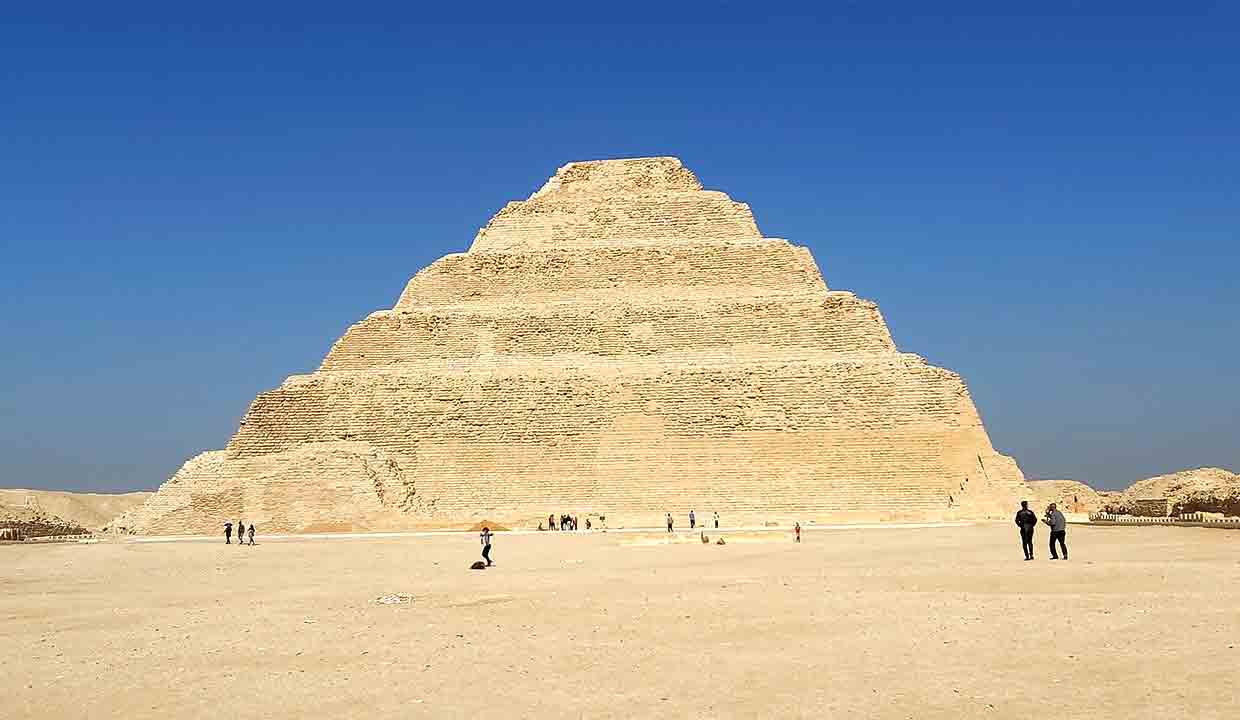Saqqara, a timeless testament: From Djoser’s Step Pyramid to hidden tombs, it’s a canvas of history, art, and mysteries. Dive in!
Introduction: The word ‘necropolis’ is derived from the Greek words ‘nekros’ (dead) and ‘polis’ (city), which aptly describes Saqqara – a vast city of the dead. Positioned near the banks of the Nile River, about 30 kilometers south of the bustling city of Cairo, the Saqqara necropolis stands as a testament to the grandeur, religious beliefs, and architectural advancements of ancient Egypt.
Historical Background: Saqqara served as the primary burial ground for Memphis, the ancient capital of Egypt, for over two millennia. Memphis, founded around 3100 BCE by the pharaoh Menes, was the administrative capital of ancient Egypt during the Old Kingdom. Consequently, its necropolis, Saqqara, became the final resting place for countless individuals, from the royalty and the elite to ordinary citizens.
Architectural Marvels: The Saqqara landscape is dotted with pyramids, tombs, and mastabas (flat-roofed, rectangular tombs with outward sloping sides). Among the numerous architectural wonders, the Step Pyramid of Djoser is undoubtedly the most iconic. Designed by the legendary architect Imhotep for Pharaoh Djoser around 2650 BCE, it’s considered the world’s oldest monumental stone structure and marks the evolution from the simple mastaba to the more familiar pyramid shape.
Why is Saqqara Considered a Necropolis?
-
Scale and Diversity of Tombs:
One of the primary reasons Saqqara is labeled a necropolis is due to its sheer size and the variety of burial structures it contains. The site covers an area of about 7 km from north to south, with numerous pyramids, mastabas, and other tomb types reflecting different periods in ancient Egyptian history.
-
Highly Decorated Tombs:
The tombs at Saqqara are known for their exquisite carvings, murals, and hieroglyphics. These inscriptions and artworks provide valuable insights into the lives, beliefs, and customs of the people of that era. The vibrant reliefs in the tombs of high officials particularly narrate the daily life, religious rituals, and even wildlife of ancient Egypt.
-
Sacred to the God Ptah:
Saqqara’s significance as a burial ground is also rooted in religious beliefs. It was believed to be under the influence of the god Ptah, the patron deity of Memphis. Ptah was considered the creator god and the god of craftsmen, and by burying the dead in Saqqara, the ancient Egyptians hoped to ensure their loved ones would be under his protection in the afterlife.
- Evolution of Funerary Architecture: Saqqara offers a unique timeline of the evolution of funerary practices and architecture. From the earlier mastabas to the pyramid complexes, and from simple burials to grand temples accompanying the tombs, the necropolis serves as a visual guide to the progression of ancient Egyptian burial customs.
Recent Discoveries and the Importance of Preservation: Despite its age, Saqqara continues to reveal its secrets. Recent archaeological excavations have uncovered beautifully preserved tombs, mummies, statues, and other artifacts. These discoveries highlight the need for continuous efforts in preserving and understanding this ancient necropolis, as it remains a valuable key to unlocking the mysteries of ancient Egypt.
Conclusion: Saqqara, with its monumental structures, intricate artworks, and thousands of years of history, is a reflection of ancient Egypt’s reverence for the afterlife. It not only served as a burial ground but also as a canvas where beliefs, customs, and architectural prowess were showcased. As we walk through the sands of Saqqara, we don’t just traverse a cemetery; we journey through the pages of history, witnessing the evolution of a civilization that continues to captivate the world.
